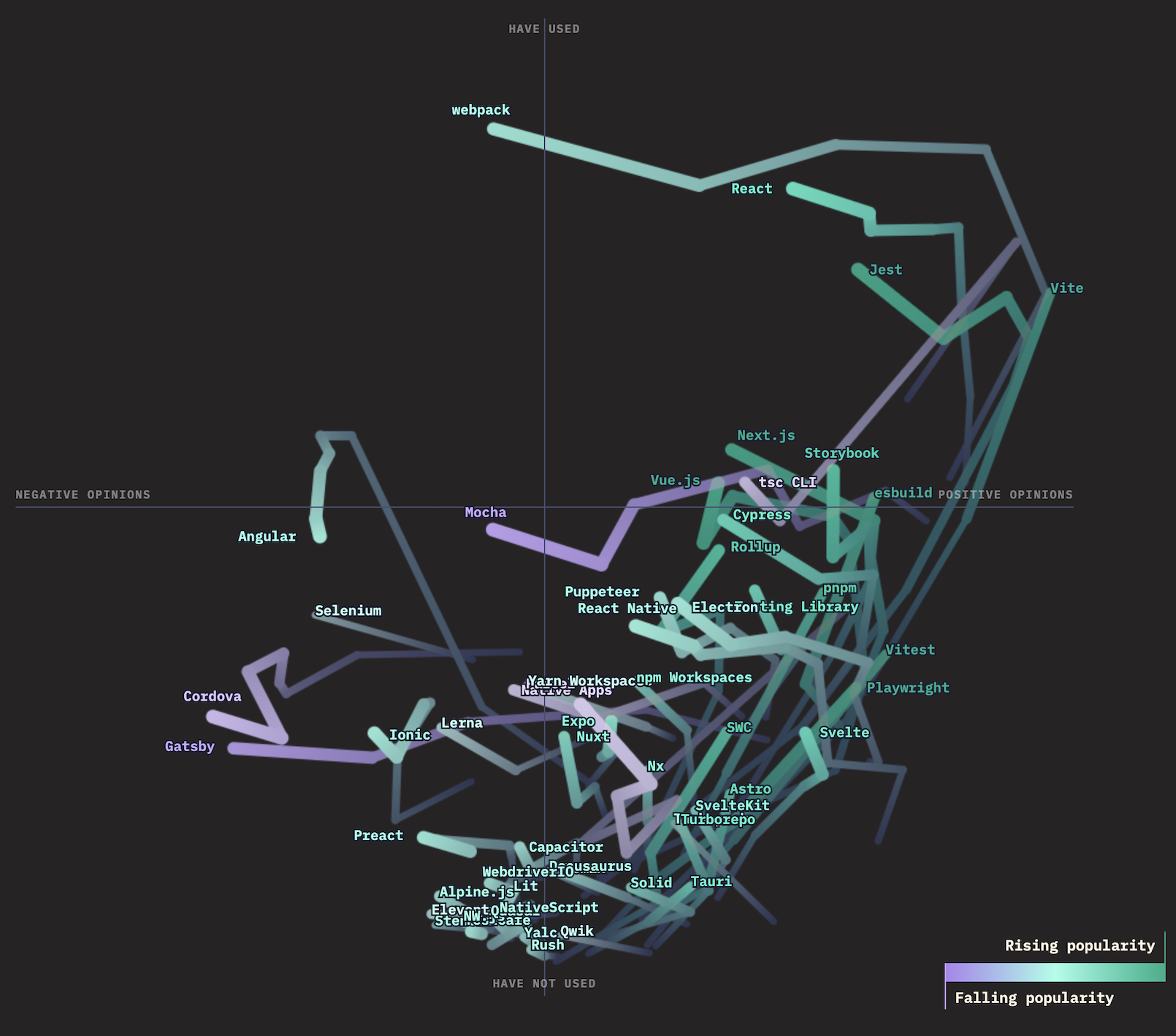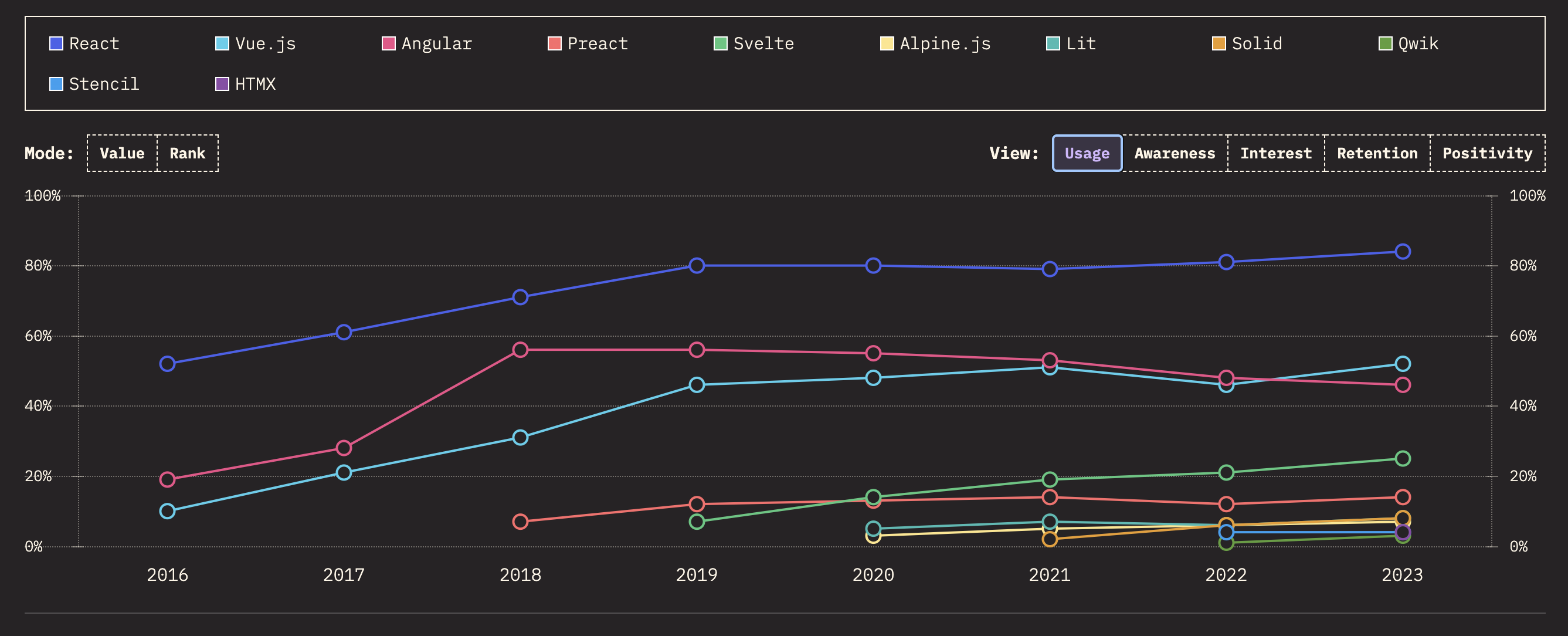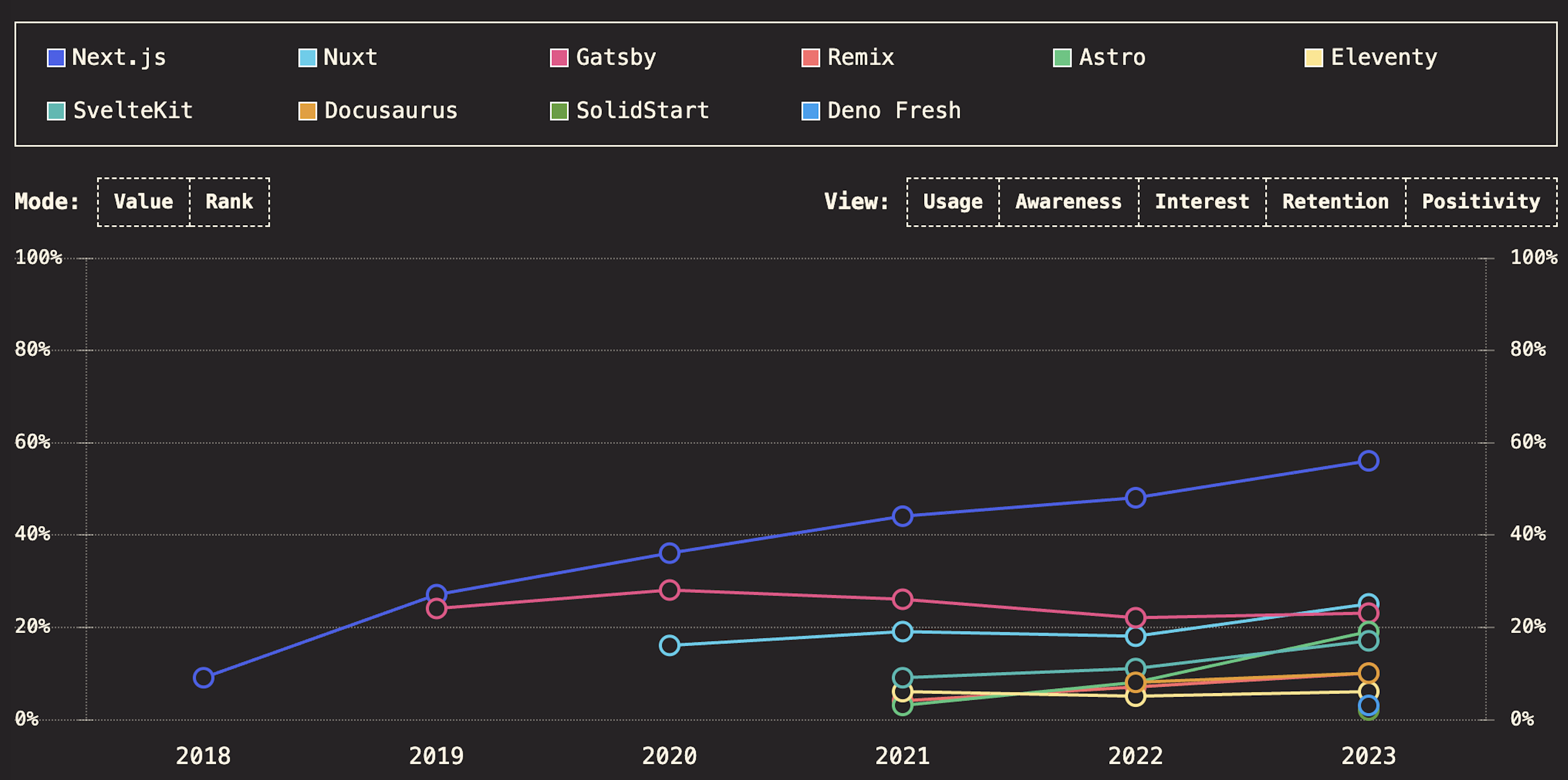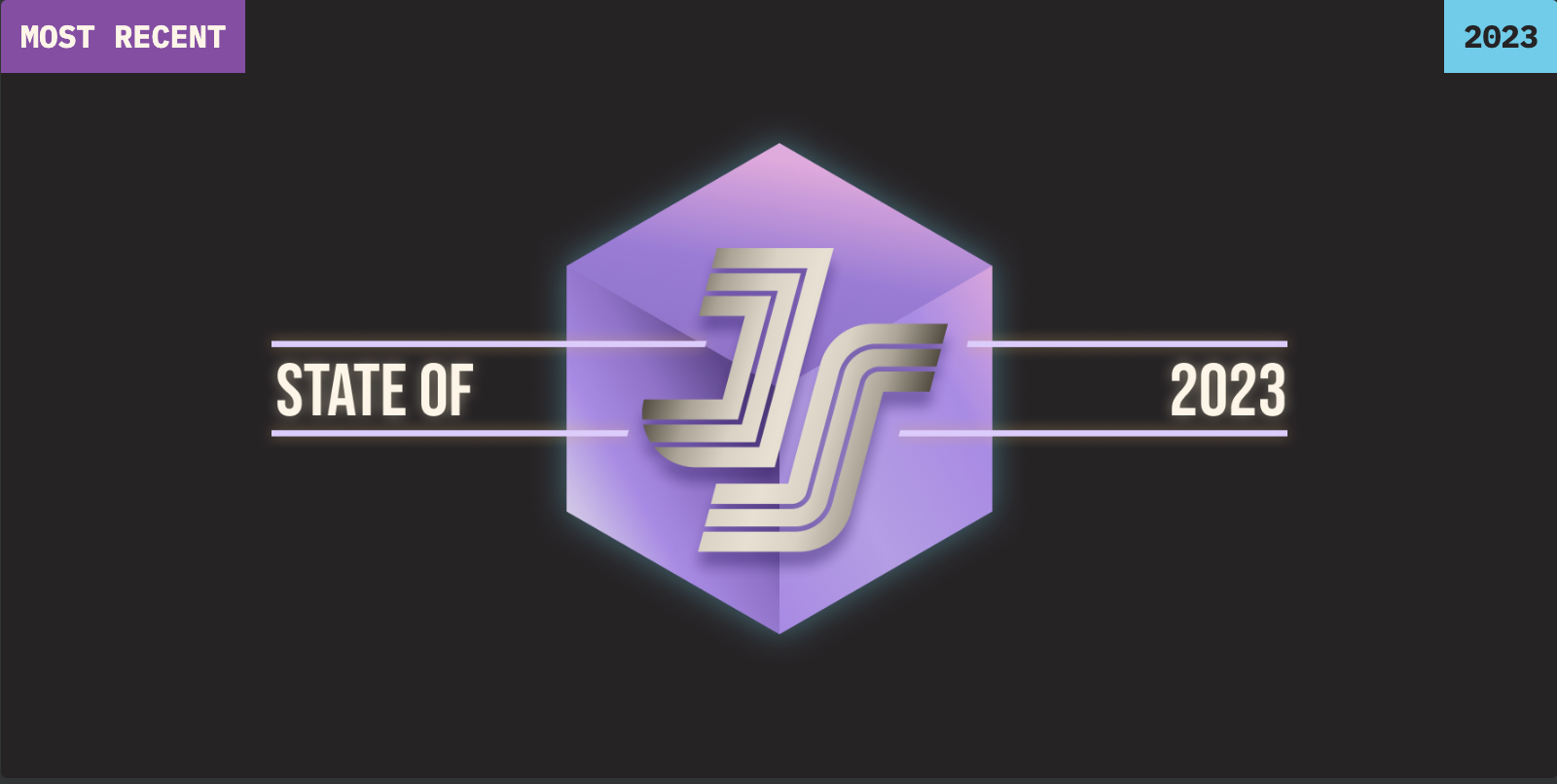Introduction
The State of JS 2023 is an annual survey that delves into the opinions and trends among JavaScript developers worldwide. It provides an overview of the most popular and appreciated technologies, libraries, and tools, offering valuable insights into the evolution of developer preferences and highlighting emerging trends and declining technologies. 🌟
Library Tier List

Category S (90%+): The most appreciated tools include Vite, Vitest, Playwright, pnpm, esbuild, and Astro. These tools are highly rated for their speed and efficiency, reflecting massive adoption and positive feedback. 🚀
Category A (80-89%): SvelteKit, Svelte, Turborepo, Rollup, and Storybook continue to gain popularity for their ability to build reactive web applications and manage monorepos.
Category B (70-79%): Jest, Nuxt, Next.js, React, and Vue.js are widely used and appreciated, offering robust solutions for server-side rendering and static site generation. 👍
Category C (60-69%): Older tools like Parcel, Mocha, and webpack show declining popularity, indicating a shift towards more modern alternatives. Angular is also seeing a decrease in popularity.
Changes Over Time

Some technologies like Vite, esbuild, and SWC are rising in popularity due to their speed. React, Next.js, and Jest remain stable with consistently positive reviews. Angular, Mocha, and Selenium are declining as developers move towards more efficient alternatives. New entries like Bun, Qwik, and Solid show growing adoption and positive feedback. 🔄
Frontend Frameworks Ratios Over Time

React continues to dominate with stable and high adoption. Vue.js has stabilized after significant growth. Angular is declining due to its complexity and increased competition. Svelte is rising thanks to its performance and simplicity. Preact and Solid show positive trends with stable and growing adoption, respectively. Other frameworks like Qwik, Stencil, Alpine.js, Lit, and HTMX are gaining recognition. 📈
Meta-Frameworks Frontend

Next.js leads with steady growth, reaching around 60% adoption in 2023. Its strengths lie in server-side rendering (SSR) and static site generation (SSG), making it a popular choice for developers. Nuxt follows closely for Vue.js users, maintaining stable adoption rates. Gatsby has seen a decline after peaking in 2020, losing ground to more modern solutions. SvelteKit and Remix are gaining traction, with developers appreciating their performance and modern features. Astro is growing rapidly, favored for its ultra-fast static site generation. Eleventy, Docusaurus, SolidStart, and Deno Fresh show modest adoption but potential for growth, reflecting interest in specialized use cases and new paradigms. 🛠️
Testing Tools Ratios Over Time
Jest has grown significantly since 2016, showing high awareness, interest, and usage among developers. It reached its peak usage in 2023, despite a slight dip in positivity. Mocha, once a leading tool, has seen a decline in usage and positivity since 2016. Storybook has maintained steady growth, particularly noted for its component-driven development. Cypress and Playwright have seen consistent growth in awareness and usage, with Playwright noted for its reliability. Tools like WebdriverIO and Selenium have shown declining trends, while newer tools like Vitest are quickly gaining traction due to their performance. 🧪
Build Tools Ratios Over Time
Webpack, once dominant, is seeing a decline in positivity and retention despite high usage. Parcel and Rollup, initially promising, show declining interest and positivity. SWC and esbuild, known for their speed, are gaining traction. Vite stands out with high awareness, interest, and retention, reflecting a strong preference for faster build tools. New entries like Turbopack and tsup indicate a continuous search for more efficient solutions in the build tool ecosystem. 🛠️
Monorepo Tools Ratios Over Time
Turborepo and pnpm lead the pack with growing awareness and usage, reflecting their efficiency and developer satisfaction. Nx shows moderate growth in awareness and interest, while Yarn Workspaces and npm Workspaces maintain steady adoption. Tools like Rush, Yalc, and Lerna have lower awareness and usage, indicating room for improvement or potential decline. 📦
The State of JavaScript 2023 provides a valuable overview of the current JavaScript ecosystem, illustrating the most popular technologies and emerging trends. While based on developer opinions, these insights help better understand JavaScript development dynamics. See you next year to track these trends and discover new technologies shaping the future of JavaScript development. 🚀✨
Explore More
